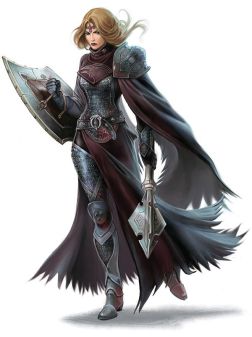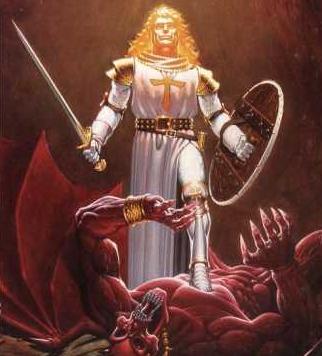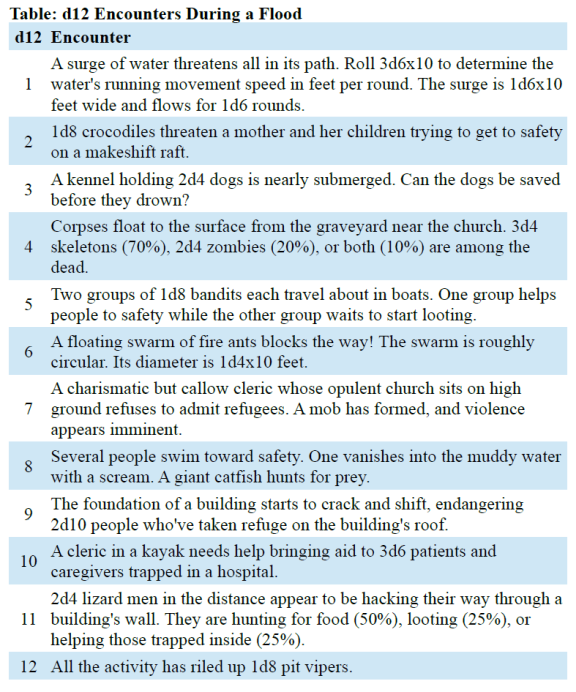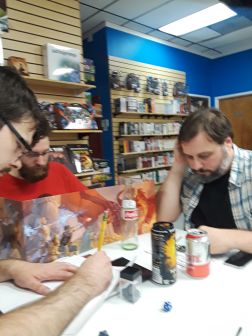In Gibeon the LORD appeared to Solomon in a dream at night. God said: “Whatever you ask I shall give you.” Solomon answered: “You have shown great kindness to your servant, David my father, because he walked before you with fidelity, justice, and an upright heart; and you have continued this great kindness toward him today, giving him a son to sit upon his throne. Now, LORD, my God, you have made me, your servant, king to succeed David my father; but I am a mere youth, not knowing at all how to act — I, your servant, among the people you have chosen, a people so vast that it cannot be numbered or counted. Give your servant, therefore, a listening heart to judge your people and to distinguish between good and evil. For who is able to give judgment for this vast people of yours?” (1 Kings 3:5-9)

Wisdom traditionally has been viewed as the ability to discern good from evil with the aim of doing the first and avoiding the latter. This view is reflected in AD&D‘s explanation of Wisdom, which “is a composite term for the character’s enlightenment, judgement, wile, will power, and (to a certain extent) intuitiveness” (PH, p. 11). It is the attribute which “subsumes the categories of willpower, judgment, wile, enlightenment, and intuitiveness” (DMG, p. 15). The qualities that Wisdom represents help me understand why Wisdom is the principal attribute of clerics, as well as being important for druids, paladins, rangers, and monks. For all but the monk, Wisdom also represents a connection to the divine, and, by extension, is a factor in a character’s alignment.
Some words about alignment. First and foremost, alignment is not a set of rules that dictate how a character must act. Sure, certain characters may suffer major consequences for acting contrary to their alignments, but their alignments per se do not make contrary action impossible. Also, alignment descriptions in the rules (PH, pp. 33-34; DMG, pp. 23-24) are generalizations. But what is alignment? It is a short-hand description of “the broad ethos of thinking, reasoning creatures” (DMG, p. 23). That’s it. Alignment summarizes a particular creature’s “disposition, character, or fundamental values” (to quote the dictionary about ethos). Alignment makes it possible to predict what a certain creature will do in such-and-such situation most of the time. Deviations are always possible, and probably fairly common in at least small ways.
Alignment is not, however, a reflection of a wholly subjective set of value judgments. In AD&D as the rules are written, it makes no sense to say that dwarves only think orcs are evil because dwarves are socially conditioned to think that way, but the orcs don’t view their actions as evil and so those actions are not really evil. It cannot be denied that there is always a subjective element in all moral judgments, but orcs “are cruel and hate living things in general”. They really hate elves “and will always attack them in preference to other creatures.” Orcs “take slaves for work, food, and entertainment (torture, etc) but not elves whom they kill immediately” (emphases added). In no way can cruelty, murderous cannibalism, slavery, torture for fun, et cetera be colored as anything other than evil. Orcs are not misunderstood or functioning under different but equally valid cultural norms. They’re evil as a general rule, both individually and collectively.
Alignment is especially important to classes with a connection to the divine. For example, clerics who “have not been faithful to their teachings, followed the aims of their deity, contributed freely to the cause, and otherwise acted according to the tenets of their faith” may find themselves unable to acquire certain levels of spells (DMG, p. 38). The consequences for paladins are perhaps the most severe of all. Paladins who “knowing perform an act which is chaotic in nature” must do appropriate penance. Those who “ever knowingly and willingly perform an evil act” lose paladin status forever.
My strong suspicion is that Mr. Gygax’s wording about paladins shows at least a familiarity with classical expressions of Christian moral theology. Note that certain actions are “chaotic in nature”. In other words, those actions are in and of themselves chaotic, regardless of what the paladin’s opinion might be or what the circumstances are. Christian moral theology doesn’t really consider things on a law-chaos axis as much as a good-evil axis, but recalling that “law dictates that order and organization [are] necessary and desirable” and “generally supports the group as more important than the individual” helps me grok essential differences. Ultimately, law cannot be concerned with what is merely legal. The Western philosophical tradition, well back before the time of Christ, has understood that unjust laws are not really laws. If torture is evil, for example, no law saying torture is acceptable makes torture not evil. Instead, in its essence, it seems as if law’s main thrust is that the Other and/or the Many have greater priority than the Self and/or the One. Note well that AD&D‘s alignment system conceptually separates such considerations from good-evil.

What this means for the lawful creature is that, all things being equal, the lawful creature puts the needs of others first. If a cleric and her companions are severely injured and in imminent danger of more harm, the lawful cleric probably heals her companions first. Perhaps some practical circumstances makes another use of healing resources more prudent, but, in general, the lawful cleric’s needs take a backseat to the needs of others. Back to the paladin, avoiding chaotic actions probably means that much of the time the paladin’s ability to “lay on hands” is going to be used to heal someone else.
When turning to good-evil, we see that “the tenets of good are human rights, or in the case of AD&D, creature rights. Each creature is entitled to life, relative freedom, and the prospect of happiness. Cruelty and suffering are undesirable.” Evil “does not concern itself with rights or happiness; purpose is the determinant” (DMG, p. 23). In other words, evil is about the will to power, about the ends both justifying and rationalizing the means. Those means may be aimed at the perceived benefit of the group (lawful evil) or entirely selfish (chaotic evil), but questions about life, freedom, and happiness are unimportant. As such, evil actions are evil in and of themselves. They are malum in se, not merely malum prohibitum. They violate what has been variously been called divine law, natural law, moral law, or (to use the term preferred by C. S. Lewis in The Abolition of Man) the Tao.
Back to what appears to be Mr. Gygax’s familiarity with classical expressions of Christian moral theology. Note that the paladin must “knowingly and willingly” do evil in order to lose paladin status. In classical Christian moral theology, distinctions are made between acts that are venial and mortal. Paladins lose their paladinhood for mortal acts, and for an act to be mortal it must meet certain objective criteria, namely:
1. The act’s subject matter must be grave. In other words, the act itself must be malum in se.
2. The act must be committed with full knowledge/awareness of the action’s evil and the gravity of the offense.
3. The act must be committed with deliberate and complete consent.
Each part above corresponds to part of makes paladins stop being paladins forever:
1. The act must be evil.
2. The act must be knowingly performed.
3. The act must be willingly performed.
In instances where the paladin does not have sufficient knowledge and/or does not act freely, the action remains evil, but does not meet the criteria necessary for him being stripped of paladinhood.
So what does this have to do with Wisdom?
Well, since Wisdom deals in part with a character’s ability to judge good from evil, it stands to reason that a character’s Wisdom somehow reflects at least the voice of conscience that kicks in before a character performs some act that will have dire consequences (such as loss of spells or no longer getting to advance as a paladin). This also means that I, as a DM, need to be clear about what constitutes law-chaos and good-evil in my campaign, and that I clearly communicate that information to my players. It doesn’t mean that such considerations are up for debate (although it might). If in my AD&D game I as DM say that torture is always and everywhere evil, then torture is always and everywhere evil.
Does that mean that, for example, a paladin may never resort to torture? No, for one reason: Paladins have free will. Does that mean that a paladin who tortures an enemy immediately and forever ceases to be a paladin? Probably. Referring to the three criteria above and considering that it’s my campaign world governed by certain moral absolutes I’ve defined as DM, the first criterion is met. I’ve communicated such to the players, but that doesn’t mean the paladin is all that hip to the truth. This is where the paladin’s Wisdom comes into play. If the paladin lacks sufficient Wisdom and sufficient moral training, he may be bit off in his understanding about torture. He might be fully aware of torture’s evil and gravity. Even if he is, there is still the third criterion. Does the paladin really have no other acceptable choice? If so, then, yes, the paladin commits a gravely evil act, but does not do so willingly. Some punishment from the gods is appropriate, but this punishment ought not include the permanent loss of paladinhood.
Wisdom reflects a character’s ability to discern good from evil. An exceptionally wise character ought not be surprised to learn after the fact that such-and-such action is evil. The character would have the insight to know ahead of time. The character may choose to ignore that insight as the player decides, and that is one of the ways that the moral drama implied by AD&D‘s alignment system comes into play.
Tags: AD&D, Catholic, game play











